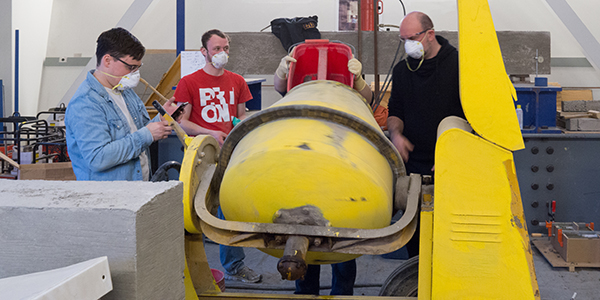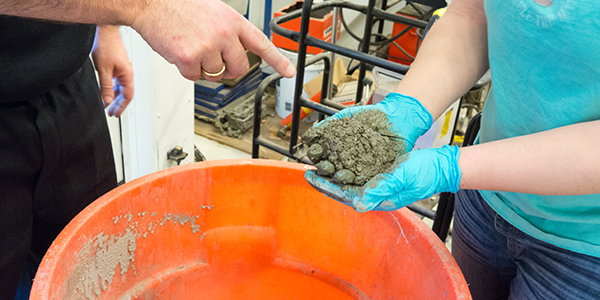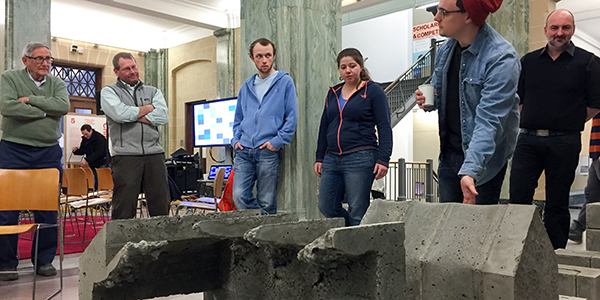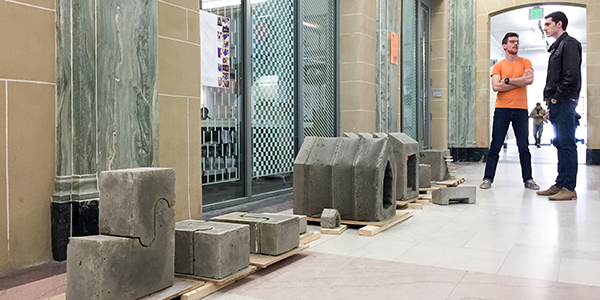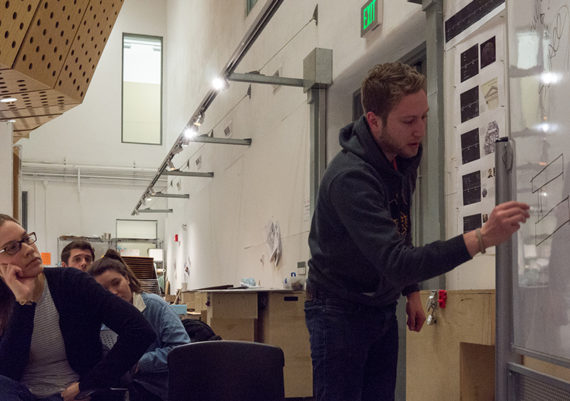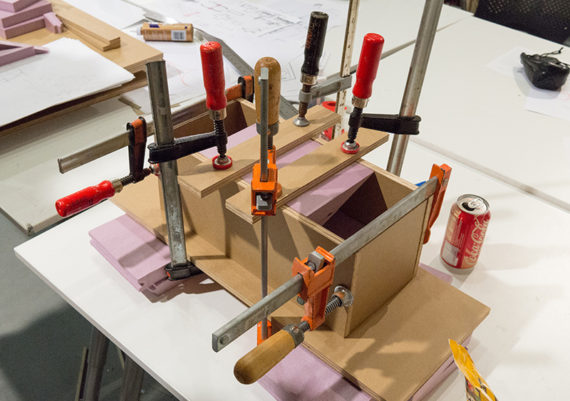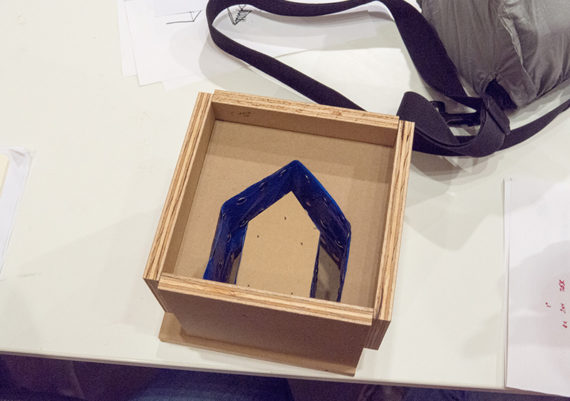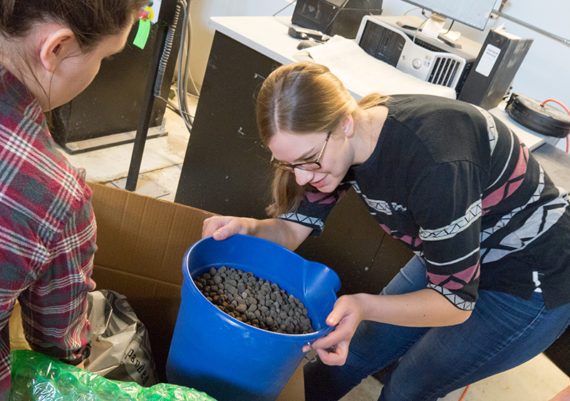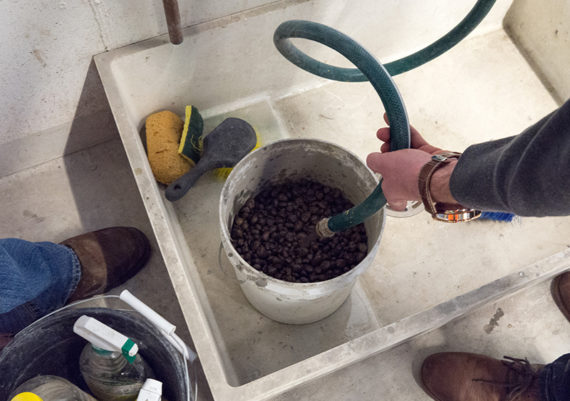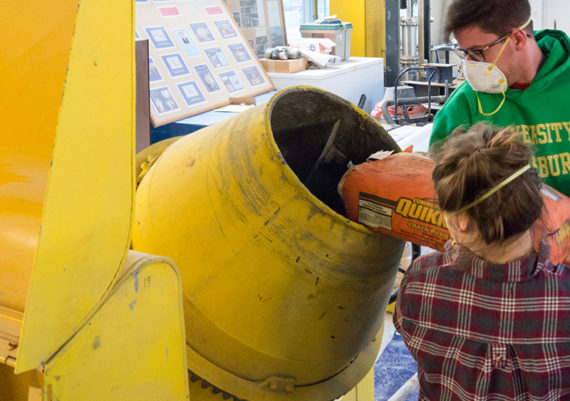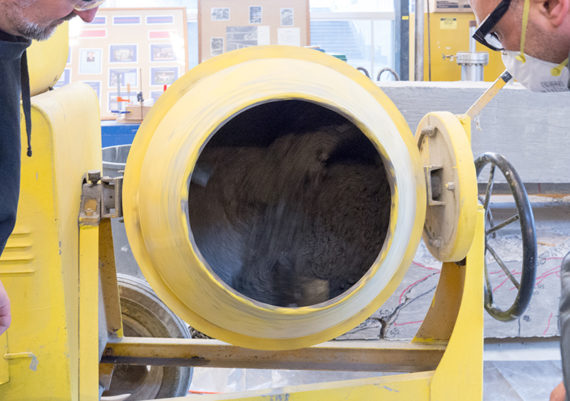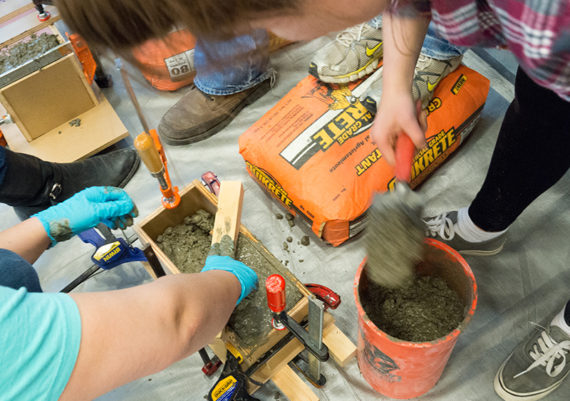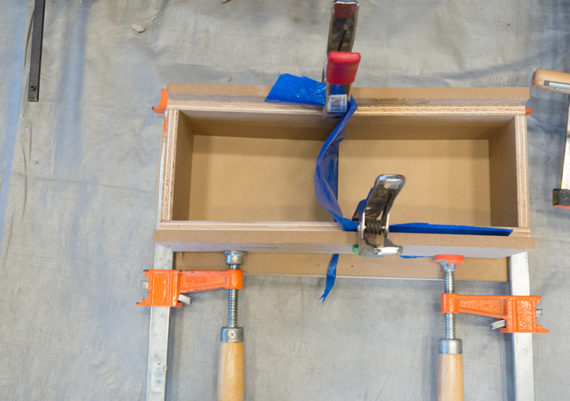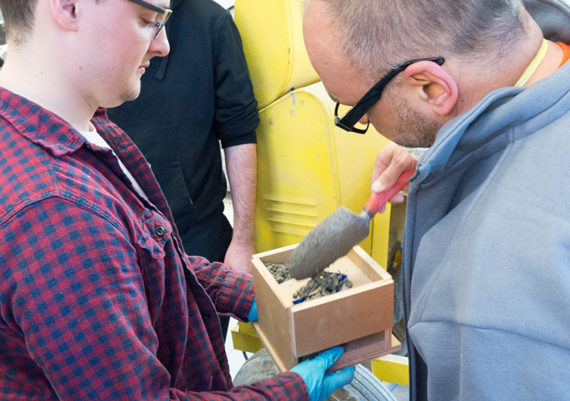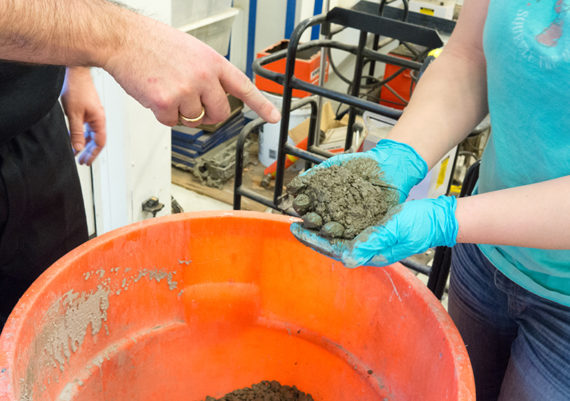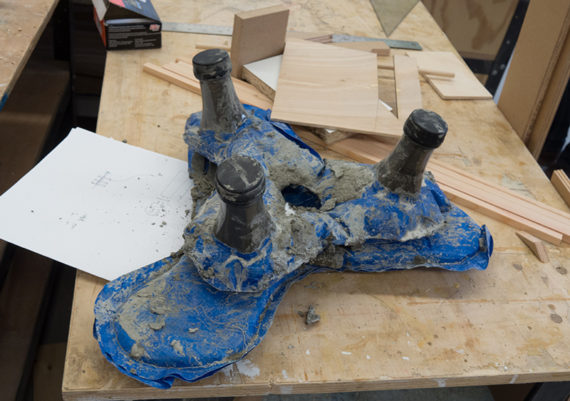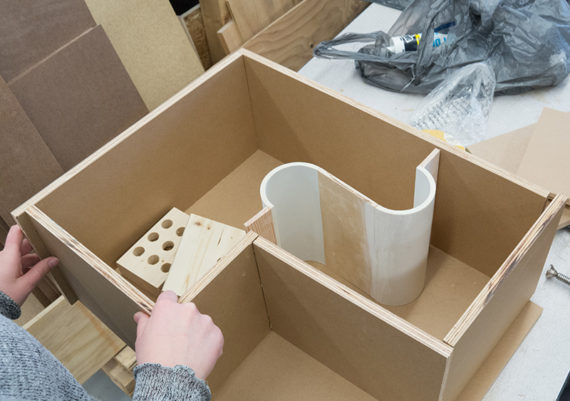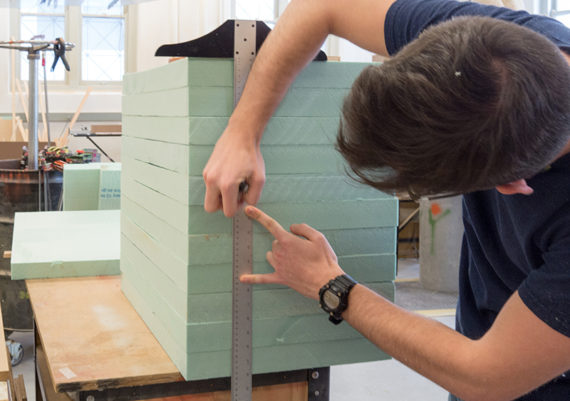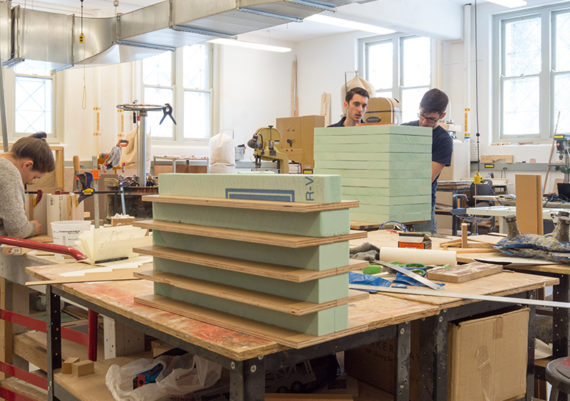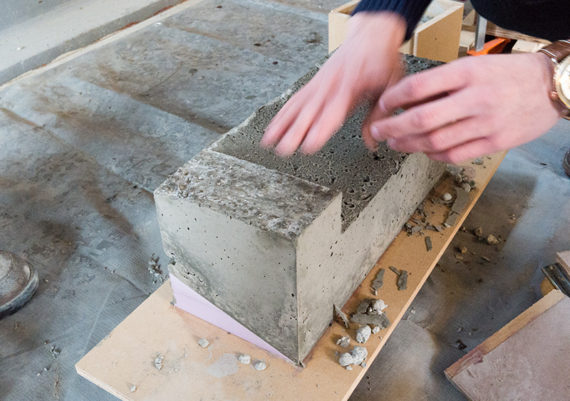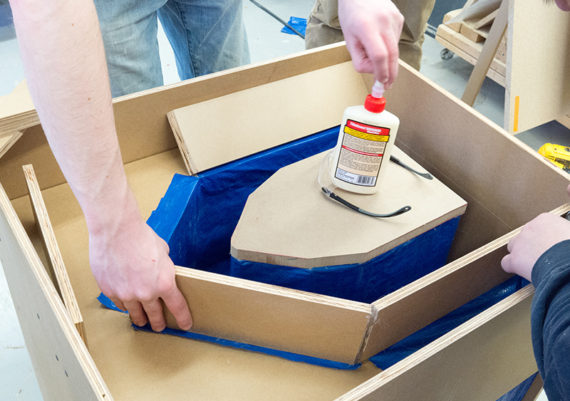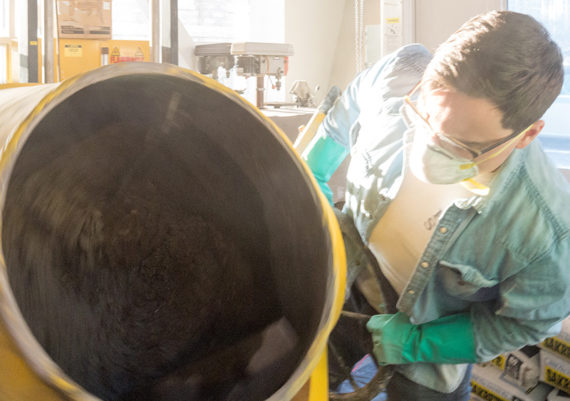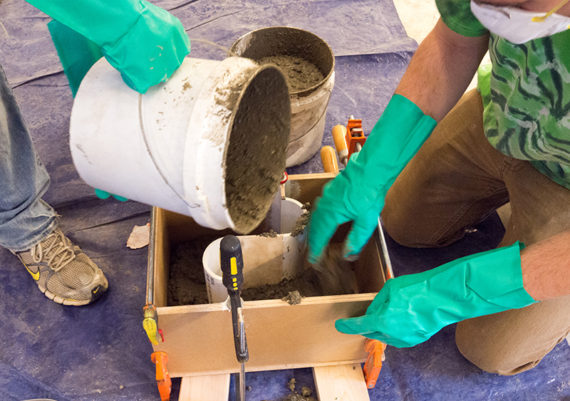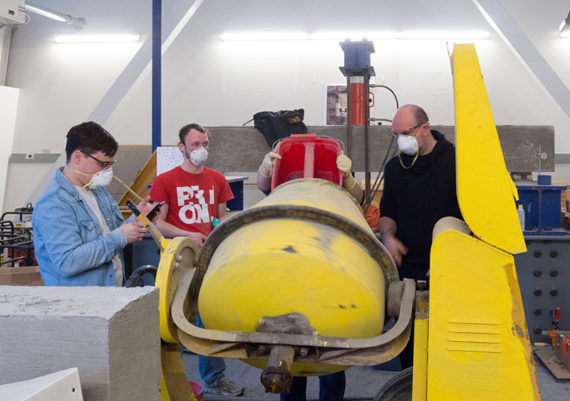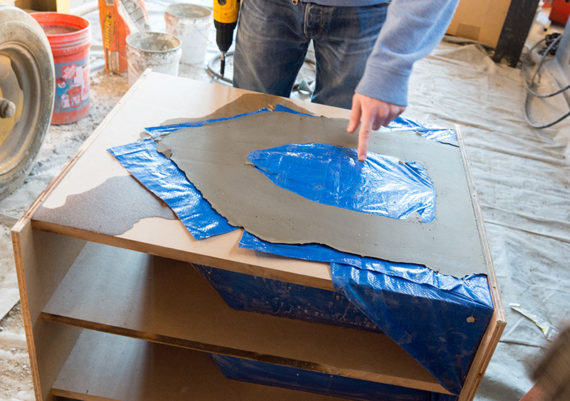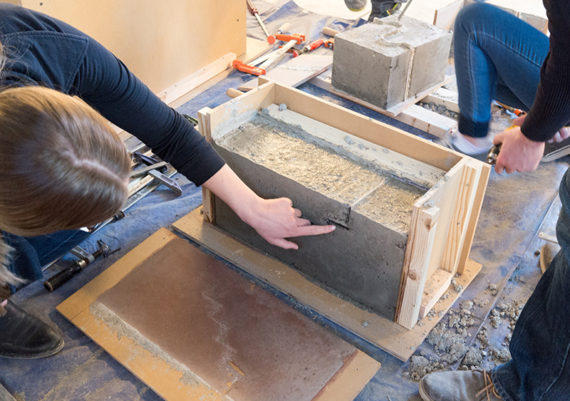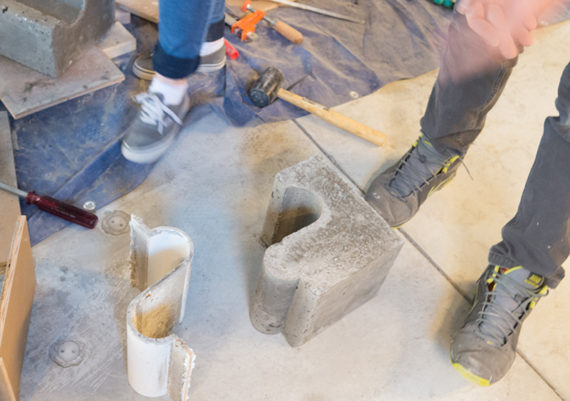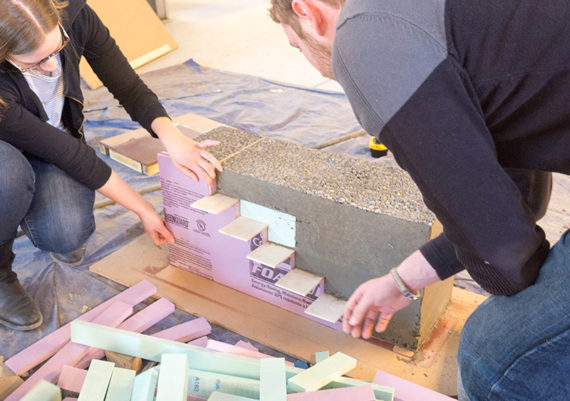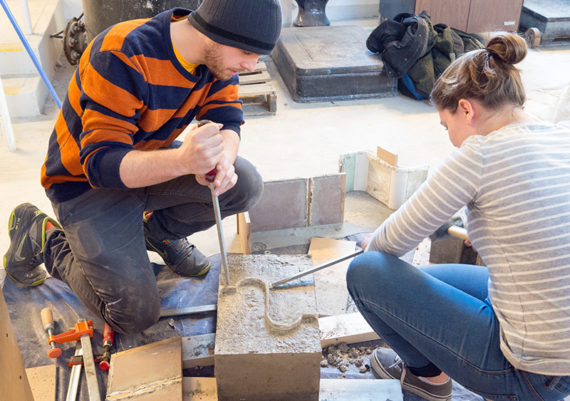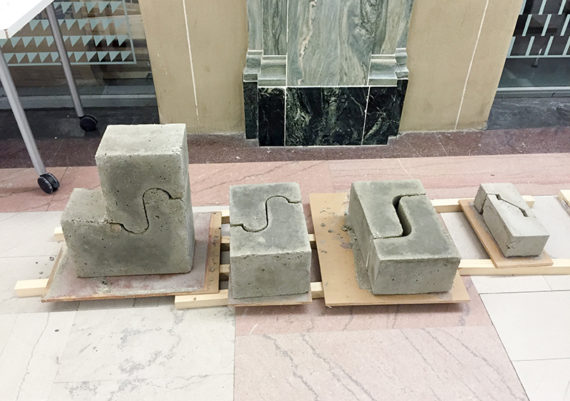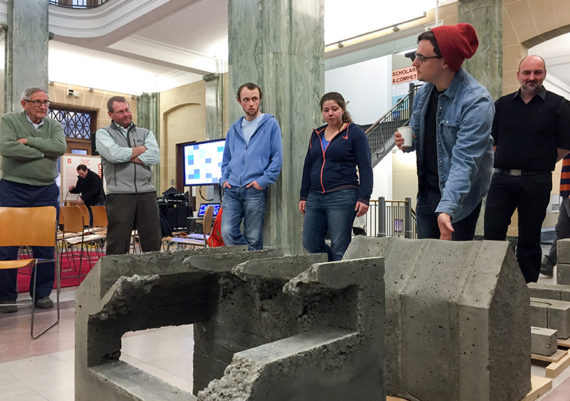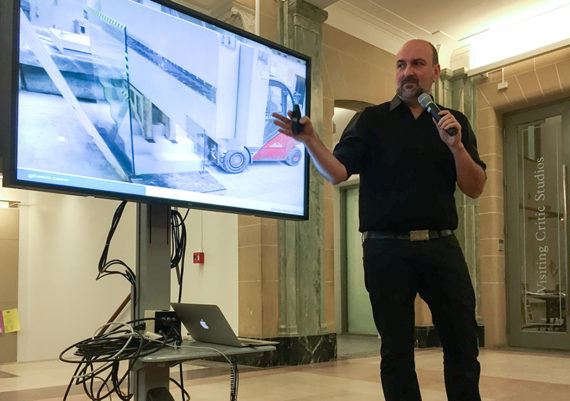warmbeton su
Hands-on workshop for architecture students of Syracuse University. Based on the material porperties of insulating, load-bearing, ultra-lightweight concrete, its architectural potential is investigated.
2015
concept, coordination & management, tutoring
Workshop Warmbeton Syracuse University
Many architects seem to look back with envy towards their illustrious predecessors from the early 20th century like Felix Candela, Le Corbusier and Oscar Niemeyer. The main topic of their envy turns out to be the possibility to truly built monolithic. Nowadays made virtual impossible due to environmentally driven building physics requirements, labor costs combined with traditional formwork technologies and a wide-spread negative perception of weathering of fair faced concrete. However, the idea to be able to build in one material still evokes as almost magical attraction.
Notwithstanding the inability for those captured by this ambition to work monolithic to explain their desire – one material may lead to one detail, ‘one’ is beautiful in and by itself, simple is better, less is more, and so on – there are in fact more objective arguments available as well.
Due to increasing insulation demands and due to a more and more structured building process, various materials have surfaced for various specific tasks. Concrete for structural requirements, foam and mineral wool for insulation, glass and aluminum for façade cladding, and more. These different materials are combined and layered to become ‘packages’ that service all needs. In return the building process has become one of additions and connection, and in order to obtain economic viable for example solutions façade ’packages’ have become optimized and ‘thinner’ in terms of ‘architectural depth’. One representative from the ‘one-material-quest’ stated that architects nowadays only have about 8 centimeter of depth to work with for any architectural expression within a façade.
One monolithic material may simplify the building process, all needs in one go, literary. And due to the necessary thickness of such a material, one immediately gets about 50 centimeters of depth to work with.
Current concrete material developments have proven to be able to deliver a monolithic solution that is loadbearing, insulating (up to Northern European standards), workable, watertight and super airtight. So we now can build 4 story buildings, have very low energy usage, even up to 0-energy passive solutions. All with a lightweight concrete, diminishing the needs for heavy foundations. Material research can manage this, and at this moment there are several test buildings in progress, exploring workability, durability and weathering. Strangely enough this whole experiment is lacking from input from an architectural design point of view. What can one actually do with this offered depth. Many examples over the last 15 years testing in one way or another materials with these properties do not exceed the production of simple boxes. Perhaps one material leads to one idea, only also one very simple idea.
This workshop will explore the architectural potential of such a material. It will provide input on a technical and material level, but its main focus will be what it will offer to architects expressing ideas and concepts far beyond material properties. Back Candela and Le Corbusier, combinedwith energy and building efficiency, towards a renewed formal expression.

